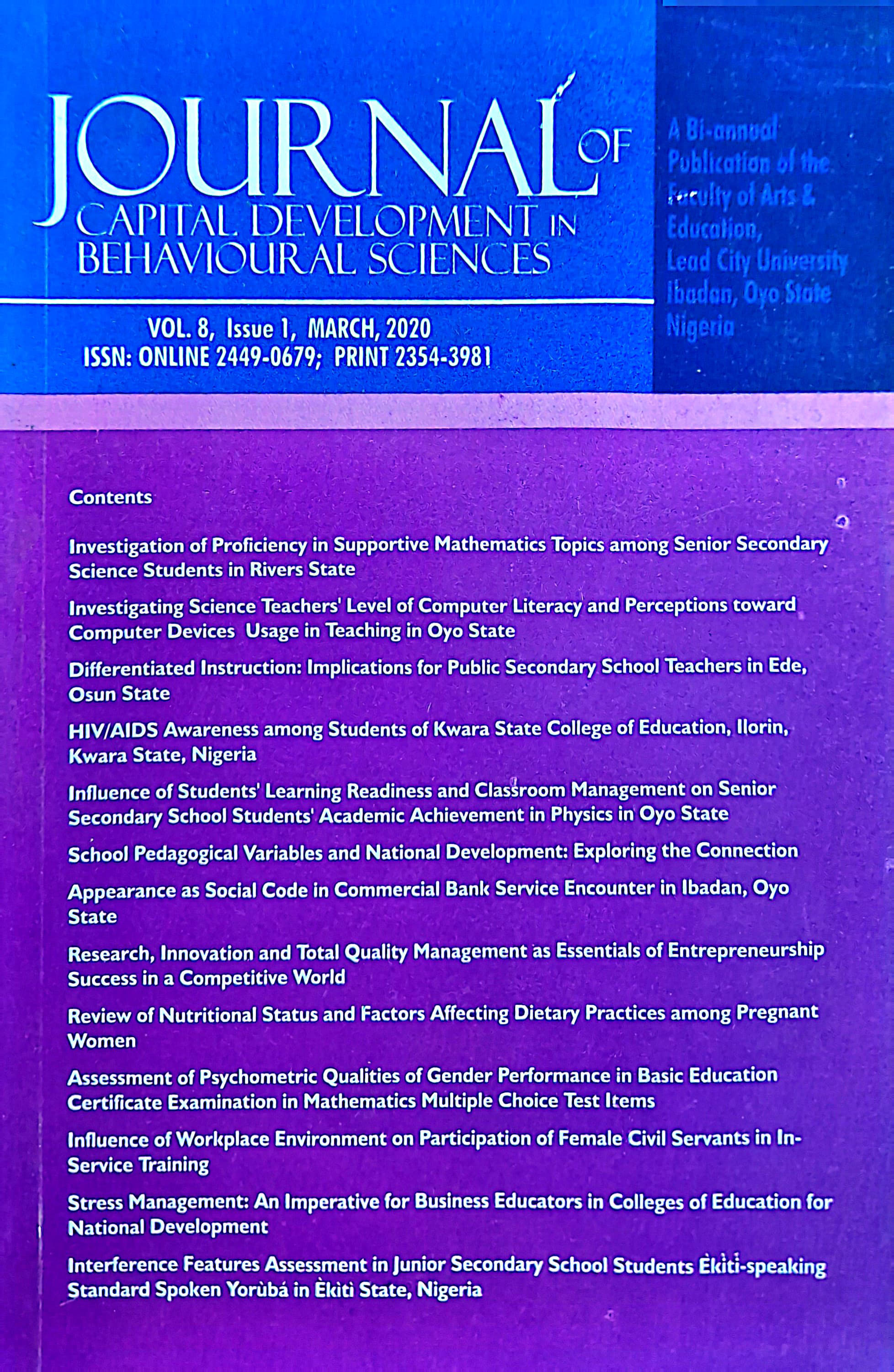Interference Features Assessment in Junior Secondary School Students E?ki?ti?-speaking Standard Spoken Yorùbá in Èkìtì State, Nigeria
Keywords:
Interference, Standard Yorùbá Language, Language PolicyAbstract
This study investigated the interference features in the standard spoken
Yorùbá of Èkìtì-speaking junior secondary school (jss) students in Èkìtì,
Èkìtì State. Due to the multilingual nature of the Nigerian society,
language usage problems that tend to occur include interference from the
mother tongue and inadequate mastery of the rules of the standard
Yorùbá language. Hence, the identification of features that interfere in the
standard spoken Yorùbá of Èkìtì-speaking Junior Secondary School
Students necessitated this study. This study adopted a descriptive
research design. Multi-stage sampling technique was used to select 100
jss E?ki?ti?-speaking students from five schools in I?ko??le? Local Government
Area in Èkìtì State. The instrument adopted for this study was a
researcher-designed Test of Interference Features (TIF) which was
administered to the participants to obtain data. The data were analysed
using percentage and the t-test statistic. Findings of the study revealed
that there were interference features in the standard spoken Yorùbá of
Èkìtì-speaking jss students. In other words, the Èkìtì dialect interferes with the standard spoken Yorùbá of the students. It was also revealed that
there was no significant difference in the Yorùbá consonant sounds and
Yorùbá vowel sounds which reflect interference features in the spoken
standard Yorùbá of Èkìtì-speaking male and female jss students. Among
others, it was recommended that teachers of Yorùbá language should pay
more attention to the various Yorùbá consonant sounds which tend to
reflect interference features in the spoken Yorùbá of male and female
Èkìtì-speaking jss students.

